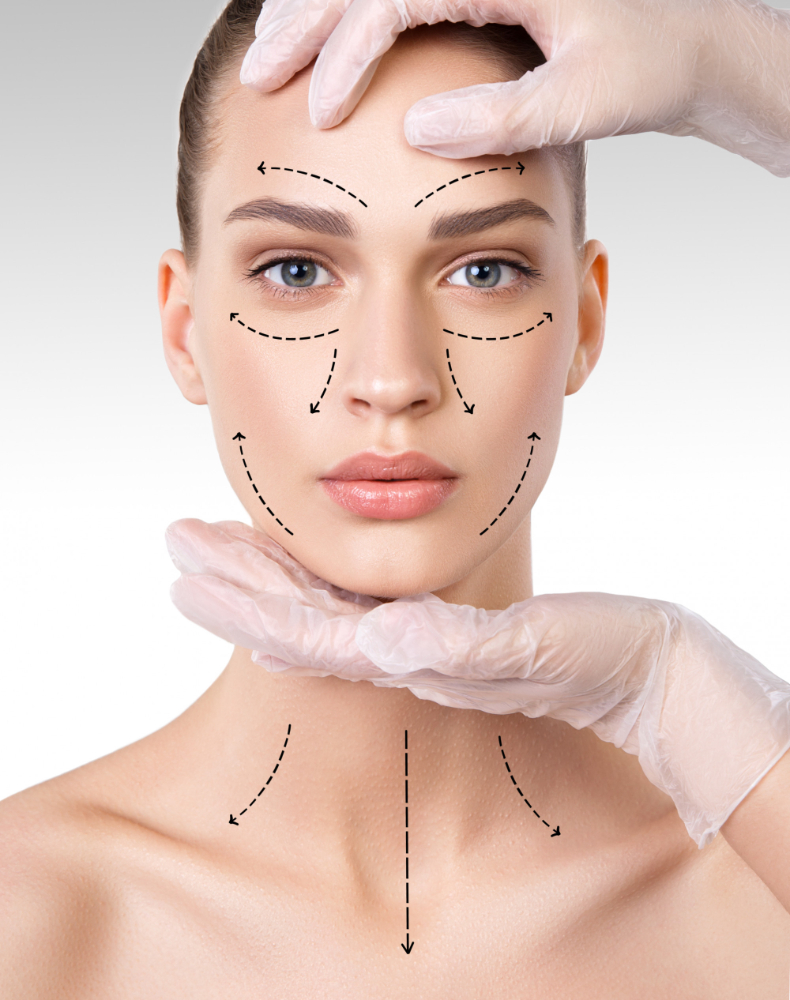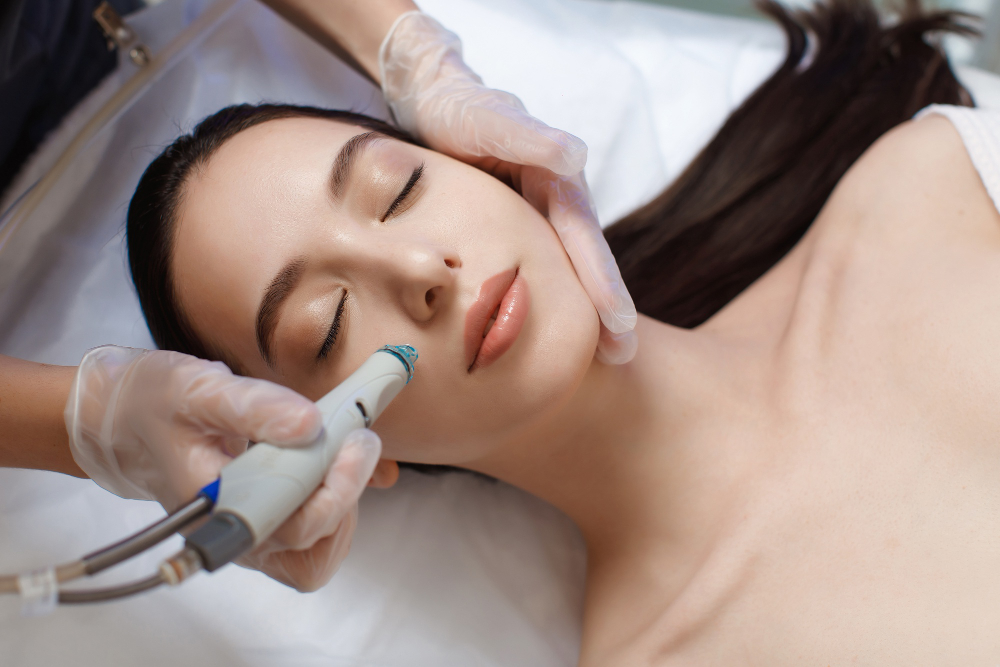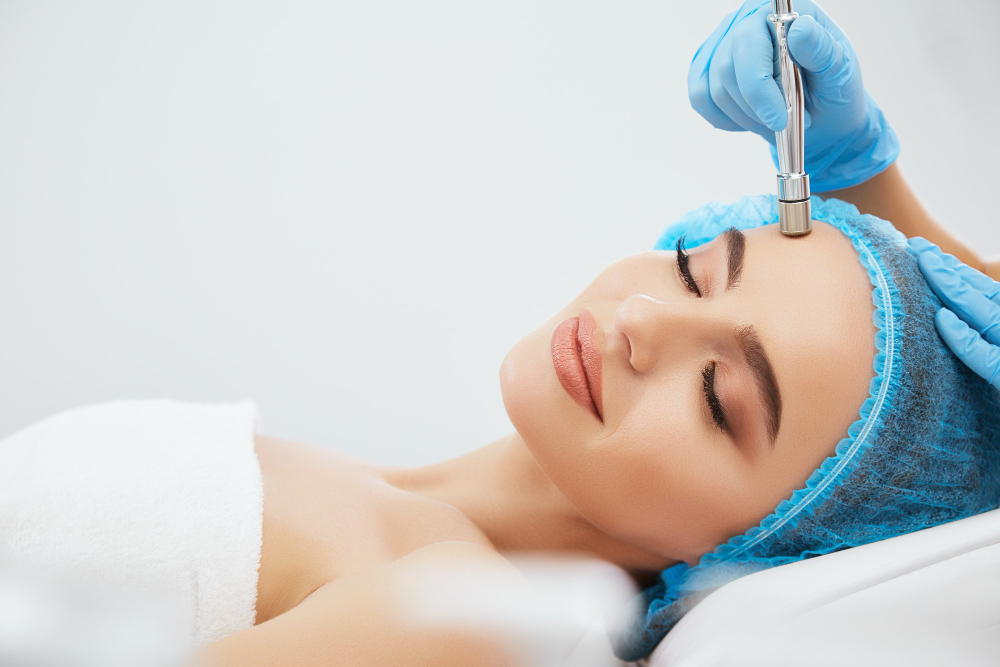Dermabrasion, Procedure and Risks
Dermabrasion, which is also referred to as dermaplaning or dermablading , is a non-invasive treatment used to address wrinkles, acne scars, and various skin imperfections

Ideal candidates
While dermabrasion can be beneficial for people of all ages and genders, there are some individuals who are more suitable candidates for the procedure.
These include:
- Older adults tend to experience slower healing processes, which could explain why younger individuals heal at a faster rate.
- People who have a lighter skin tone or belong to Fitzpatrick skin types I and II tend to have a lower likelihood of experiencing permanent discoloration or blotchiness as a result of treatment, unlike individuals with darker skin tones.
- Individuals who have a decreased likelihood of experiencing specific skin reactions, like cold sores, fever blisters, or allergic rashes, are less prone to experiencing a worsening of these conditions, which could potentially interfere with the outcome of dermabrasion.
When Is Dermabrasion or Microdermabrasion Used?
The purpose of developing dermabrasion was to enhance the appearance of acne scars, pox marks, and scars resulting from accidents or diseases. However, it should be noted that dermabrasion is not an effective treatment for congenital skin defects, the majority of moles, pigmented birthmarks, or scars caused by burns.
Dermabrasion is typically considered safe for individuals with light skin tones, while those with darker skin may experience scarring or changes in pigmentation from undergoing dermabrasion.
Microdermabrasion is suitable for people of all skin types and shades. It produces subtle results without altering the skin color or leaving any scars. However, it may not effectively address more severe issues like scars, stretch marks, wrinkles, or deep acne scars.
Microdermabrasion requires less recovery time compared to dermabrasion. The skin may appear pink temporarily, but it completely recovers within a day. Unlike dermabrasion, microdermabrasion does not involve surgery or anesthesia, making it suitable for individuals who cannot afford to take time off for healing.

What should I consider before getting a dermabrasion?
For more personalized information, we recommend speaking with your aesthetic plastic surgeon.
- You need to be in good general health.
- Dermabrasion is not as invasive as a facelift but more aggressive than microdermabrasion and light chemical peels.
- There are no limitations on age for this medical procedure.
- Certain dermabrasion procedures can potentially lighten the skin.
- The use of this treatment may result in skin irritation or scarring, a alteration in skin tone, and increased sensitivity to sunlight.
- It will take different amounts of time for you to recover based on the level and scope of your treatment.
What happens during dermabrasion?
The choice of anesthesia for dermabrasion varies depending on the scope of the treatment. In most cases, your doctor will administer local anesthesia to numb the area. However, in certain instances, sedation may be necessary to induce relaxation or drowsiness. In rare situations, general anesthesia may be used throughout the procedure.
While you receive the treatment, a helper will stretch your skin tightly. A tool known as a dermabrader will be used by your physician to glide over your skin. This dermabrader is a compact, mechanized device featuring a textured outer layer.
The doctor will utilize a dermabrader with a circular shape for larger areas of skin, while a dermabrader with a small tip will be used for smaller areas like the corners of your mouth. Depending on the size, your doctor may treat extensive portions of your skin in multiple sessions.
Immediately after the procedure, the doctor will apply a damp bandage to the treated area. Usually, the doctor will replace this bandage during a follow-up appointment the next day.

How long does it take to recover from dermabrasion?
The duration of your recovery will vary depending on the specific treatment and the extent of the skin that is being treated. Your surgeon will inform you about the timeframe for resuming your usual level of activity and work. Furthermore, your surgeon will provide you and your caregiver with specific guidelines for postoperative care following your treatment, which will include details about:
- Typical symptoms you will experience
- Potential signs of complications
It is crucial to heed the patient care instructions given by your surgeon. Additionally, it is necessary to recognize that the duration of recovery differs significantly among individuals.
What results should I expect after dermabrasion?
You may notice significant enhancements in your skin’s surface with refinishing treatments, but it will require some patience before witnessing the ultimate outcome.
It will typically take around three months for the pink color of your skin to diminish. Until then, it is advisable to use nonallergenic makeup when going out. Once your new skin is completely pigmented, its color should closely resemble the surrounding skin, making the procedure nearly unnoticeable.
How do dermabrasion and microdermabrasion differ from each other and other skin resurfacing treatments?
You may want to explore alternative skin resurfacing methods based on your skin type, condition, and objectives. Collaborate with your dermatologist to determine the most suitable option for your needs.
Take into account the different options for skin resurfacing:
- Chemical peels, regardless of skin type, utilize chemicals to eliminate the outermost layers of the skin.
- Laser skin resurfacing involves the use of a laser to diminish the appearance of wrinkles or scars, but it is specifically intended for individuals with fair skin types.
- Microneedling employs a handheld device to diminish the appearance of wrinkles or scars on various types of skin.
- Microdermabrasion is a gentle skin treatment that involves the use of small abrasive crystals to improve the texture of various skin types. It is a less intense procedure compared to dermabrasion and is not effective for treating deep skin problems like stretch marks, scars, or wrinkles. This treatment does not require anesthesia, and your skin will fully recover within 24 hours.
Having dermabrasion in Turkey?
The patient must carefully search for an appropriate service provider, have information, and ask about the surgeon and his experience. And also, checking examples of his previous operations.
Accordingly, we encourage you to contact the Health & Beauty to obtain all information and details, and to ensure that you have your operation done by the hands of the most skilled doctors working in this specialty.
